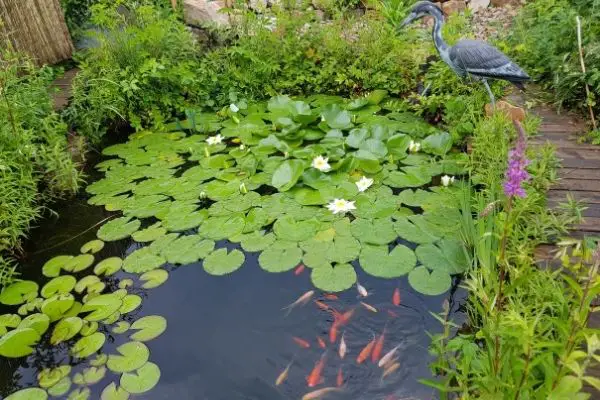Compost 101: What Is Aquatic Compost?
Compost is compost, right? Hmmm… Not when it comes to caring for aquatic plants!
Aquatic compost is a special soil mixture that is designed to anchor pond plant roots without encouraging algae growth.
Despite the name, this material is very different from the compost you use in your normal garden beds. (And, as we’ll discuss shortly, you can’t use one type of compost in place of the other!)

Here’s everything you need to know about aquatic compost and how to grow the healthiest pond and aquarium plants possible!
What Is Aquatic Compost?
Before diving into aquatic compost and what it is used for, take a moment to forget all of your preconceptions about compost…
Despite the name, aquatic compost is not something made from decomposed kitchen scraps – the basis for garden composting. Instead, it is a specially formulated soil designed for the needs of aquatic plants.
Another way aquatic compost’s name is deceptive is that this isn’t something you typically make at home. Most aquatic compost is sold pre-mixed, just like other varieties of potting or garden soil.
What Is Aquatic Compost Made Of?
Aquatic compost is a combination of inorganic AND organic soil compounds ideal for use in ponds or aquariums. The main ingredient in aquatic compost is loam.
Loam is a type of soil made up primarily of sand and clay. It also contains humus, the organic material left behind by decomposed plants and animals.

Many aquatic compost formulas contain slow-release fertilizers.
Some aquatic composts available on the market contain peat, a type of partially decomposed plant matter sourced from bogs. However, the use of high amounts of peat in aquatic planting is controversial and should be avoided whenever possible.
Why Is Using Aquatic Compost So Important?
It’s not enough to ask what aquatic compost is. Perhaps the most important (and interesting) question is why this product needs to exist in the first place.
Aquatic compost serves the same purpose as your regular garden soil but in a different location. It stabilizes the roots of aquatic plants while providing access to key nutrients.
But it also does things that regular soil cannot.
One of the most important traits of aquatic compost is its sheer weight. This weight ensures that the soil stays in place at the bottom of the pond or aquarium. Regular soil would just float to the surface, leaving the plants’ roots exposed.
The way that aquatic compost delivers nutrients is also extremely important.

Aquatic compost contains a very small amount of slow-release fertilizer. This type of fertilizer is selected for its tendency to stay within the soil instead of dispersing throughout the water.
Why is this necessary?
An abundance of nutrients will lead to algae growth. The presence of excess algae can lower the water quality and harm aquatic wildlife within the pond or aquarium.
Are There Alternatives To Aquatic Compost?
A product like Westland Aquatic Compost is by far the easiest way to plant pond or aquarium plants. But store-bought aquatic compost is not the only option out there.

Westland Aquatic Planting & Potting Mix
Many aquatic gardeners have great success planting in nothing more than gravel. This mimics a hydroponics system and works best in scenarios where there are live fish available to provide nutrients to the plants.
If you’re in a pinch, topsoil can also be used in place of aquatic compost.
Only topsoil that is completely free of fertilizers and other chemicals should be placed in an aquatic environment. Be sure to process the soil before adding it to the water for the safety of your aquatic plants and wildlife. Want to know how to use water hyacinth for compost? Check out the video below!
Frequently Asked Questions
Can pond compost be applied to a garden?
Yes, aquatic compost can be used in the garden without harming your plants. But there’s little reason to use this mixture outside of a pond or aquarium.
Aquatic compost has a much lower nutrient concentration than regular topsoil or compost. While this is perfect for an underwater environment prone to algae growth, it won’t meet the needs of most above-ground plants.
If you do add aquatic compost for pond plants to your garden beds, keep in mind that you’ll need to supply extra nutrition. Aquatic compost is best used as a substitute for clay- or sand-based soil at the bottom of planters or raised garden boxes. Stick to traditional soil for the rest.
Can you use normal compost for aquatic plants?
No! Big NO! Adding normal compost to your pond or aquarium is a recipe for nutritional imbalance and algae growth.
Even if your compost contains the right nutrients, it won’t sit at the bottom of the pond like aquatic compost will. Normal compost is far too light and will float to the surface almost immediately.
You should even use caution when applying compost to above-ground beds surrounding a pond. The run-off from rain or irrigation could cause compost to flow into the water nearby.





